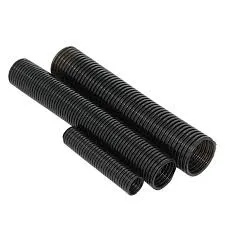Exploring the Benefits and Features of Synchronous Drive Systems for Enhanced Performance
Understanding Synchronous Drive A Comprehensive Overview
In the realm of electrical engineering and machinery, the synchronous drive system stands out as a significant technological advancement. This system is widely used in various applications, from industrial machinery to electric vehicles. At its core, the synchronous drive operates on the principle that the rotor of a synchronous motor moves in sync with the rotational speed of the magnetic field produced by the stator. This feature allows for precise control of speed and torque, making synchronous drives an optimal choice for numerous applications.
Principles of Synchronous Drive
The primary component of a synchronous drive is the synchronous motor, which is different from an asynchronous motor primarily because of its rotor. In a synchronous motor, the rotor is equipped with either permanent magnets or an electromagnet powered by direct current (DC). When the stator is energized with alternating current (AC), a rotating magnetic field is created. The rotor, being magnetically locked with the rotating field, turns at the same frequency as the AC supply, hence maintaining synchronization.
The synchronous speed of a motor is determined by the frequency of the AC supply and the number of poles in the motor. This relationship is given by the formula
\[ \text{Synchronous Speed} (N_s) = \frac{120 \times f}{P} \]
where \(f\) is the frequency in hertz and \(P\) is the number of poles. This predictable speed characteristic is what makes synchronous drives so appealing for applications that demand precision.
Advantages of Synchronous Drives
1. High Efficiency Synchronous drives are known for their high efficiency, particularly at full load conditions. They offer lower losses compared to other drive systems, translating to reduced energy consumption.
2. Precision Control The ability to maintain consistent speed is crucial in many applications. Synchronous drives excel in scenarios that require exact speed and position control, such as robotics, CNC machines, and material handling systems.
synchronous drive

3. Reduced Maintenance Unlike induction motors that may require regular maintenance due to slip and associated wear, synchronous motors often have fewer moving parts and can be more reliable with less downtime.
4. Power Factor Correction Synchronous motors can operate at leading, lagging, or unity power factor, thus improving the overall power factor of the electrical system and reducing the need for additional capacitors or other power factor correction devices.
Applications of Synchronous Drive
Given their advantages, synchronous drives are employed in a wide range of industries. In manufacturing, they are crucial in conveyor systems and automated production lines, where precision timing is necessary. In transportation, electric vehicles utilize synchronous motors for their efficiency and torque characteristics. Moreover, in renewable energy, synchronous generators play a vital role in wind and hydroelectric power plants due to their ability to produce constant frequency output.
Challenges and Considerations
While there are numerous benefits, synchronous drives are not without their challenges. The initial cost of synchronous motors and the control systems required can be higher than that for traditional asynchronous motors. Additionally, they require a robust control system to maintain synchronization, especially under variable load conditions. If the rotor falls out of sync, it can lead to efficiency losses or even damage.
Future Trends
The evolution of synchronous drives is closely tied to advancements in power electronics and digital control systems. The integration of smart technology and IoT (Internet of Things) into drive systems promises to enhance their performance and reliability. As industries continue to prioritize energy efficiency and precision, the role of synchronous drives is set to grow, potentially revolutionizing how we approach electric power systems and automation.
Conclusion
In summary, synchronous drive systems represent a powerful and efficient solution for a variety of applications. With their unique operational characteristics, they provide significant advantages in efficiency, control, and reliability. As technology progresses, we can expect these systems to become an even more integral part of modern engineering and industrial operations, driving innovation and sustainability forward.








